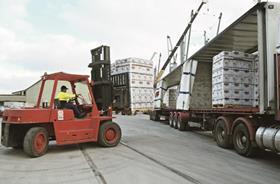
I want to let you in on a secret. The person or company that you entrust to transport your produce does not shower your products with the same amount of love and attention as you pour into them on the farm or in the factory.
That’s not because your transport company is bad at their job, exhibits poor customer service or is insensitive to your needs. It is a simple by-product of the environment they inhabit.
Consider the journey of your own produce from farm or packhouse to distribution centre and onto the supermarket.
Let’s say you are a strawberry grower (feel free to insert your own fresh produce item here). The journey may start with just your strawberries on the truck, but then they get mixed with other strawberries, which then get mixed with other fresh produce, which then get mixed with other chilled categories, which then get mixed with everything.
As delivery trucks arrive at hundreds of supermarkets around the country every day, they will be carrying anything and everything from fresh vegetables and meat to baked beans and breakfast cereal.
After being in this business for nearly three decades, I admire how far fresh produce companies have come in telling their ‘stories’ to reach the hearts and minds of consumers.
Yet, in an ironic plot twist to that narrative, I see many of those companies and category managers losing control of their story the closer their produce moves towards the consumer.
And the irony here only deepens. As food gets closer to the consumer it increases in value. Yet, it is at precisely this part of the supply chain journey when a manager’s ability to influence the quality outcome of the product is at its weakest.
So, what can be done to change the story to achieve a better ending?
First, don’t follow the truck (or ship, plane or train). Instead, follow the food, specifically your food.
Secondly, never assume you are working within supply chains that are customised for your food’s individual needs.
Some cold chain operations may function better than others, but they all have one thing in common; their operational procedures and parameters are set to meet a general standard. Simply, their mission is to keep food cold to primarily maintain safety.
That objective rarely aligns with what your food needs to arrive in optimum condition and with its full shelf-life horizon intact.
It may help the story if we visualise the supply chain as a rainbow. On the far left of the spectrum is you, the producer, where your knowledge and energy creates a vivid red cherry, the purest green kiwifruit or the most perfect orange. By the time the truck is backing up to the supermarket’s loading dock, your deep cherry red is lost in a haze of white light.
There’s no reason for you, however, to lose sight of your product just because those at the other end are blinded by the glare of competing freight schedules and priorities.
In a more perfect world of supply chain management, which is closer than you think, you can follow your colour through the supply chain kaleidoscope.
Similarly, your agents or carriers can show you the vividness of your colour.
And they can tell you how your product can benefit from the processes they have in place amid the other categories and products they manage in the chain. The reason this is not happening on any meaningful scale, anywhere in the world, is because we are missing the data story.
Supply chain partners who choose not to invest in technology that gives them the unvarnished truth of what food is experiencing in the supply chain have no way of understanding how food changes in relation to its environment.
Without this data-driven intelligence, it is impossible for product managers to make informed decisions that improve their quality control once the produce has left their care beyond the farm or packhouse.
For consumers, it risks a disconnect between the marketing story and the eating experience.
The day is fast approaching when consumers will take their concerns beyond the quality arc. They are going to want to know how their food has been handled in the supply chain, just as much as they now want to know the story behind its production and provenance.
As economies move towards net zero carbon emissions, consumers are going to be particularly curious about environmental performance, no doubt taking a dim view of operations that cannot demonstrate efforts to drive down carbon miles when moving products from point A to point B. How prepared are you to tell that story?
In more good news, technology exists for you to begin writing your first chapter. The initial step begins with listening to your food via data that is independently captured and generated within a secure and verifiable system.
When it comes to supply chain management, the power to choose your own adventure is within your grasp.



